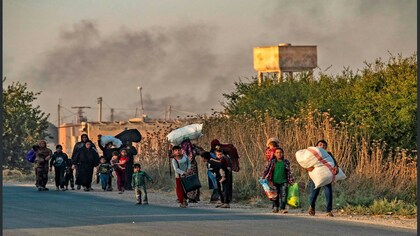The Importance of Sanctioning Iran's Central Bank
14:15 - 10 December 2011

Ever since the late October release of the International Atomic Energy Agency’s latest report on Iran, the White House has been working overtime to convince the world that it is, in fact, committed to preventing the Islamic Republic from going nuclear. Last month, responding to criticism of his Iran policy from Republican challengers, President Obama argued that the sanctions levied by his Administration to date have had “enormous bite.”
The reality, however, is considerably more modest. While it has publicly pledged its commitment to a serious economic offensive aimed at derailing Iran’s nuclear drive, in practice the White House has done far less than necessary to achieve that objective.
Thus, nearly a year-and-a-half after the passage by Congress of the most comprehensive sanctions ever levied against the Iranian regime, that leverage remains largely unused. To date, the Comprehensive Iran Sanctions, Accountability & Divestment Act (CISADA) has been applied to just ten foreign companies and entities by an Administration skittish about upsetting foreign corporations and roiling global markets. The White House likewise has proved hostile to CISADA’s successor, the Iran Threat Reduction Act, despite broad support in Congress for the legislation, which would significantly tighten the economic noose around Iran via a number of new penalties and restrictions. And most recently, Administration officials are putting the brakes on what may be the most crucial step yet in sanctions against Iran: targeting the country’s Central Bank.
The logic behind the measure is obvious. Quite simply, Iran’s Central Bank represents one of the most potent ways to hit Iran’s chief export commodity: oil. Iran currently ranks as the second largest producer in OPEC, exporting an estimated 2.4 million barrels of crude daily. In turn, oil and natural gas sales account for some 80 percent of the country’s hard currency export earnings.
The Central Bank of Iran lies at the center of this energy architecture. It serves as an intermediary between the state oil company, the National Iranian Oil Company (NIOC), and the Iranian regime’s international energy customers. By isolating the Bank from global markets, the thinking goes, the United States can help dry up critical funding for the Iranian regime and its strategic programs. The impact, moreover, could be magnified exponentially if such sanctions are coupled with an international embargo on Iranian crude oil exports—something that European countries have begun to discuss in earnest.
Congress understands this very well. Last week, the U.S. Senate voted unanimously in favor of an amendment to the Defense Authorization Bill taking serious aim at Iran’s Central Bank, and establishing a framework for penalizing those global firms that do business with it. The bipartisan measure, sponsored by Senators Mark Kirk (R-IL) and Robert Menendez (D-NJ), passed the Senate with an unprecedented vote of 100 to 0—the clearest indication to date that Congress is committed to waging real economic warfare against the Iranian regime.
The White House, however, doesn’t seem to be. The Administration reportedly is now actively working to dilute the sanctions, requesting material changes to the amendment that would significantly soften the proposed economic pressure on Tehran. In the process, it has sent the unmistakable signal this it is not truly serious about putting the financial squeeze on the Islamic Republic.
Why has the White House gone wobbly on Central Bank sanctions, a measure it itself supported not so long ago? As the Wall Street Journal notes, Administration worries have a great deal to do with the potential impact of such a designation on global oil prices—and, as a result, on prices at the pump. But there are compelling reasons to conclude that the impact of Central Bank sanctions on the global oil market is likely to be less severe than Team Obama seems to fear.
Here, Libya serves as a useful barometer. The three-and-a-half month civil war there earlier this year took the country’s oil production of 1.3 million barrels daily offline in its entirety. In response, global markets registered a significant hike in oil prices. However, this surge took largely place without serious alterations to consumer demand—or severe spikes in the price of gasoline.
There is reason to suspect that a removal of Iranian production would similarly not prove catastrophic. Although Iran’s oil output is considerably larger than that of Libya, authoritative estimates suggest there is sufficient non-Iranian crude available to meet global demand into the foreseeable future, even if current rates of world production remain static. Moreover, countries like Saudi Arabia have already indicated their willingness to ramp up oil output in order to offset any commodity price increases that would occur if and when Iranian oil goes offline. Any such increased pumping would work to drive down prices and compensate for the absence of Iranian crude. And if Washington makes judicious use of the U.S. Strategic Petroleum Reserve to mitigate price spikes in the global energy market, the effects on domestic consumers are likely to be more minimal still.
All this should matter a great deal to the White House. Whatever the public rhetoric, it is painfully clear that the economic pressure levied by Washington so far has fallen short of dissuading Iran’s ayatollahs from seeking the bomb. Recent weeks have seen a flurry of new activity on the sanctions front, as the Obama administration and its allies scramble to make their economic pressure on Iran truly matter. Such steps, however, are destined to remain marginal unless they begin to target Iran’s most important economic institution and its most lucrative export commodity.
By : Ilan Berman, Forbes
The reality, however, is considerably more modest. While it has publicly pledged its commitment to a serious economic offensive aimed at derailing Iran’s nuclear drive, in practice the White House has done far less than necessary to achieve that objective.
Thus, nearly a year-and-a-half after the passage by Congress of the most comprehensive sanctions ever levied against the Iranian regime, that leverage remains largely unused. To date, the Comprehensive Iran Sanctions, Accountability & Divestment Act (CISADA) has been applied to just ten foreign companies and entities by an Administration skittish about upsetting foreign corporations and roiling global markets. The White House likewise has proved hostile to CISADA’s successor, the Iran Threat Reduction Act, despite broad support in Congress for the legislation, which would significantly tighten the economic noose around Iran via a number of new penalties and restrictions. And most recently, Administration officials are putting the brakes on what may be the most crucial step yet in sanctions against Iran: targeting the country’s Central Bank.
The logic behind the measure is obvious. Quite simply, Iran’s Central Bank represents one of the most potent ways to hit Iran’s chief export commodity: oil. Iran currently ranks as the second largest producer in OPEC, exporting an estimated 2.4 million barrels of crude daily. In turn, oil and natural gas sales account for some 80 percent of the country’s hard currency export earnings.
The Central Bank of Iran lies at the center of this energy architecture. It serves as an intermediary between the state oil company, the National Iranian Oil Company (NIOC), and the Iranian regime’s international energy customers. By isolating the Bank from global markets, the thinking goes, the United States can help dry up critical funding for the Iranian regime and its strategic programs. The impact, moreover, could be magnified exponentially if such sanctions are coupled with an international embargo on Iranian crude oil exports—something that European countries have begun to discuss in earnest.
Congress understands this very well. Last week, the U.S. Senate voted unanimously in favor of an amendment to the Defense Authorization Bill taking serious aim at Iran’s Central Bank, and establishing a framework for penalizing those global firms that do business with it. The bipartisan measure, sponsored by Senators Mark Kirk (R-IL) and Robert Menendez (D-NJ), passed the Senate with an unprecedented vote of 100 to 0—the clearest indication to date that Congress is committed to waging real economic warfare against the Iranian regime.
The White House, however, doesn’t seem to be. The Administration reportedly is now actively working to dilute the sanctions, requesting material changes to the amendment that would significantly soften the proposed economic pressure on Tehran. In the process, it has sent the unmistakable signal this it is not truly serious about putting the financial squeeze on the Islamic Republic.
Why has the White House gone wobbly on Central Bank sanctions, a measure it itself supported not so long ago? As the Wall Street Journal notes, Administration worries have a great deal to do with the potential impact of such a designation on global oil prices—and, as a result, on prices at the pump. But there are compelling reasons to conclude that the impact of Central Bank sanctions on the global oil market is likely to be less severe than Team Obama seems to fear.
Here, Libya serves as a useful barometer. The three-and-a-half month civil war there earlier this year took the country’s oil production of 1.3 million barrels daily offline in its entirety. In response, global markets registered a significant hike in oil prices. However, this surge took largely place without serious alterations to consumer demand—or severe spikes in the price of gasoline.
There is reason to suspect that a removal of Iranian production would similarly not prove catastrophic. Although Iran’s oil output is considerably larger than that of Libya, authoritative estimates suggest there is sufficient non-Iranian crude available to meet global demand into the foreseeable future, even if current rates of world production remain static. Moreover, countries like Saudi Arabia have already indicated their willingness to ramp up oil output in order to offset any commodity price increases that would occur if and when Iranian oil goes offline. Any such increased pumping would work to drive down prices and compensate for the absence of Iranian crude. And if Washington makes judicious use of the U.S. Strategic Petroleum Reserve to mitigate price spikes in the global energy market, the effects on domestic consumers are likely to be more minimal still.
All this should matter a great deal to the White House. Whatever the public rhetoric, it is painfully clear that the economic pressure levied by Washington so far has fallen short of dissuading Iran’s ayatollahs from seeking the bomb. Recent weeks have seen a flurry of new activity on the sanctions front, as the Obama administration and its allies scramble to make their economic pressure on Iran truly matter. Such steps, however, are destined to remain marginal unless they begin to target Iran’s most important economic institution and its most lucrative export commodity.
By : Ilan Berman, Forbes



